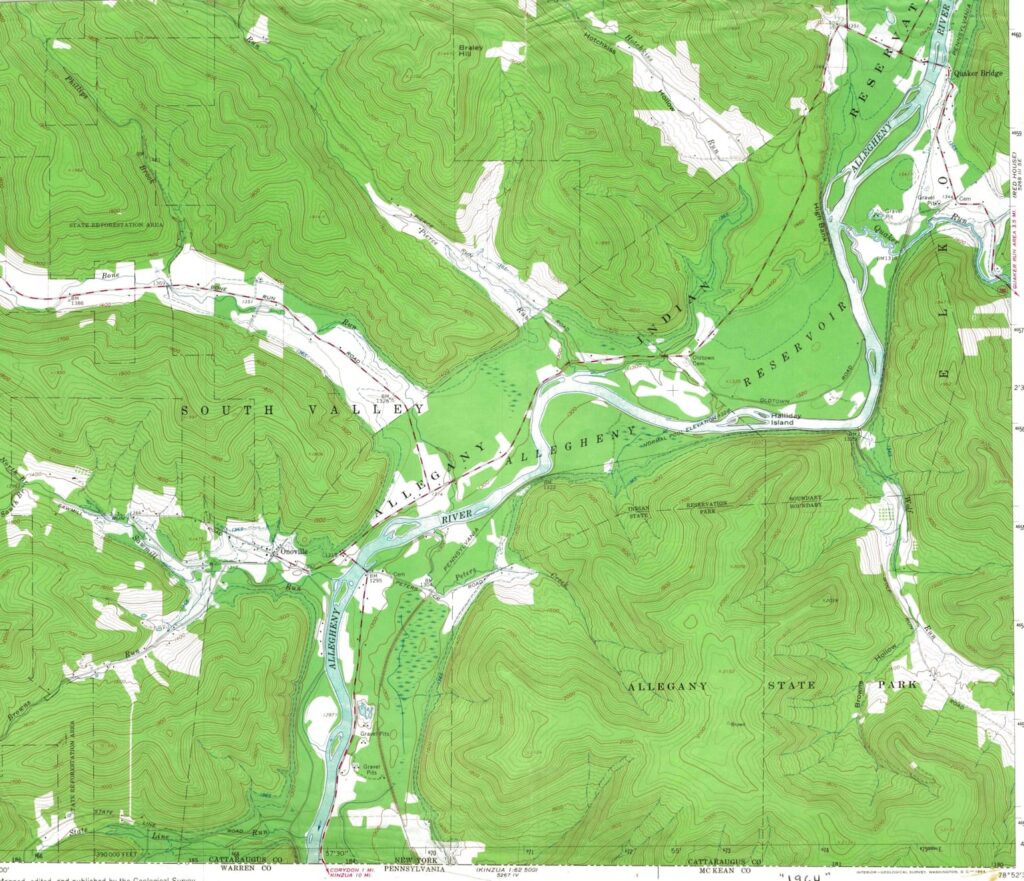
South Valley is a town in Cattaraugus County, New York. The name is derived from the town’s geographical attributes. South Valley is in the southwest corner of the county.
The town was first settled in 1798 by Quaker missionaries, who attempted to teach the local Indians agriculture and skills needed to cooperate with non-native settlers. The Quakers started a school in 1803 and erected a sawmill in 1812, but the mill caused dissension in the tribe and, at the request of Senecaleaders Cornplanter and Handsome Lake, was pulled down. Cornplanter (who spent his last years on a tract of land just south of South Valley) maintained respectful relations with the Quakers in his later life, despite differences with the group in regard to cultural assimilation. In 1838 the Quakers intervened to prevent the Ogden Land Company from acquiring the Senecas’ land (as had been agreed to in the Treaty of Buffalo Creek), and in 1842 a new Treaty of Buffalo Creek allowed the Senecas to keep their land. The town of South Valley was formed in 1847 from the south part of the town of Randolph.

Much like the then-adjacent town of Red House, South Valley depended heavily on lumber for its early economy, and the town’s population peaked in 1890, when over 1,000 residents lived there. The spin-off of Elko and the Panic of 1893 cut the town’s population by more than half, starting a decline that would last several decades. Much of the town was evacuated and razed in 1965 when the Kinzua Dam was constructed, as many small communities that once inhabited the town along the Allegheny River were flooded; by 1970, South Valley’s population bottomed out at 164 people, a number that has since modestly rebounded. Maps of Cattaraugus County produced today will sometimes make note of the now-mostly abandoned hamlet of Onoville (still marked on I-86 and on navigation signs). A marina was constructed where Onoville used to be. Onoville’s name was reputedly the result of objections to the original town’s nickname, “Jugville;” after residents exclaimed “oh, no” to using the Jugville name, a fellow resident flippantly suggested “Onoville” instead, which was accepted.[2]
- From Wikipedia

